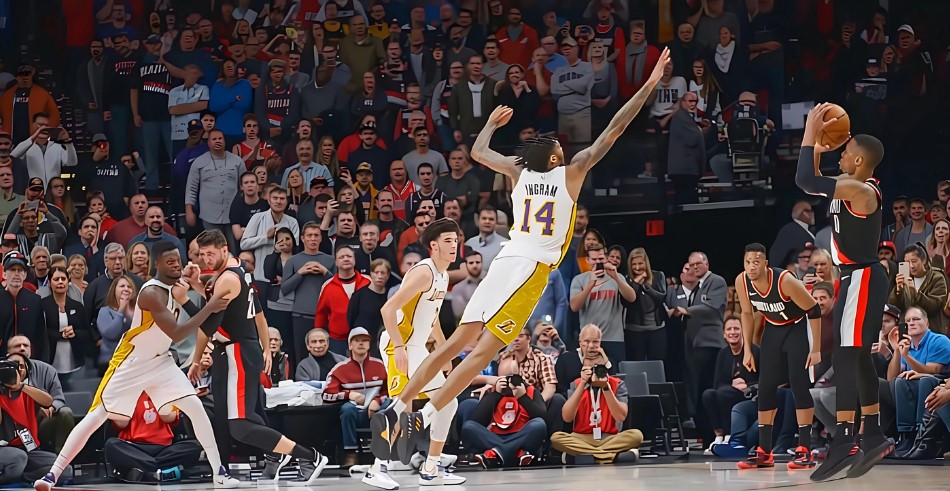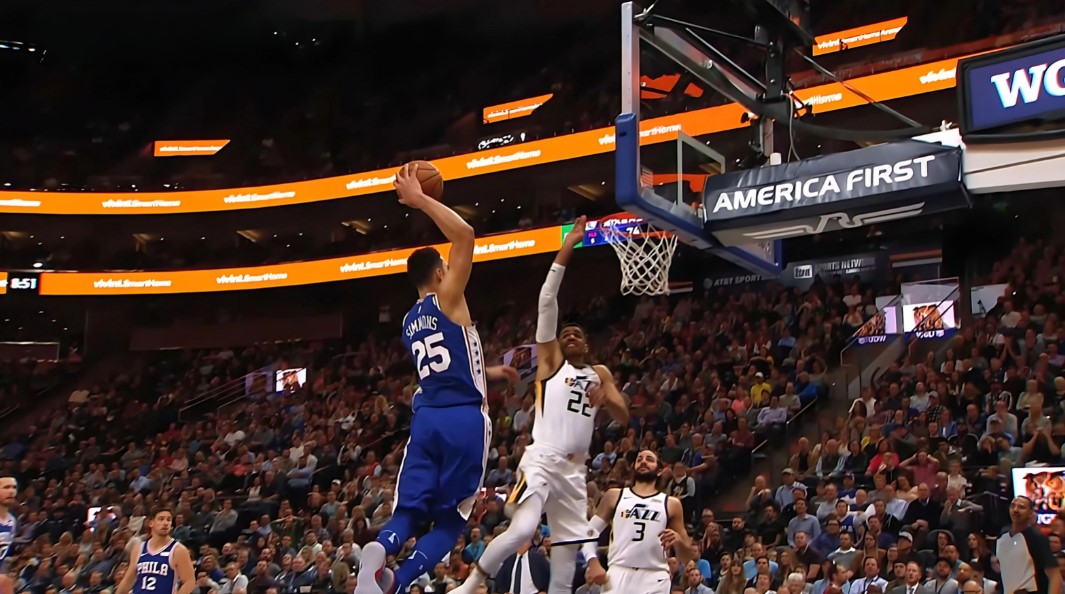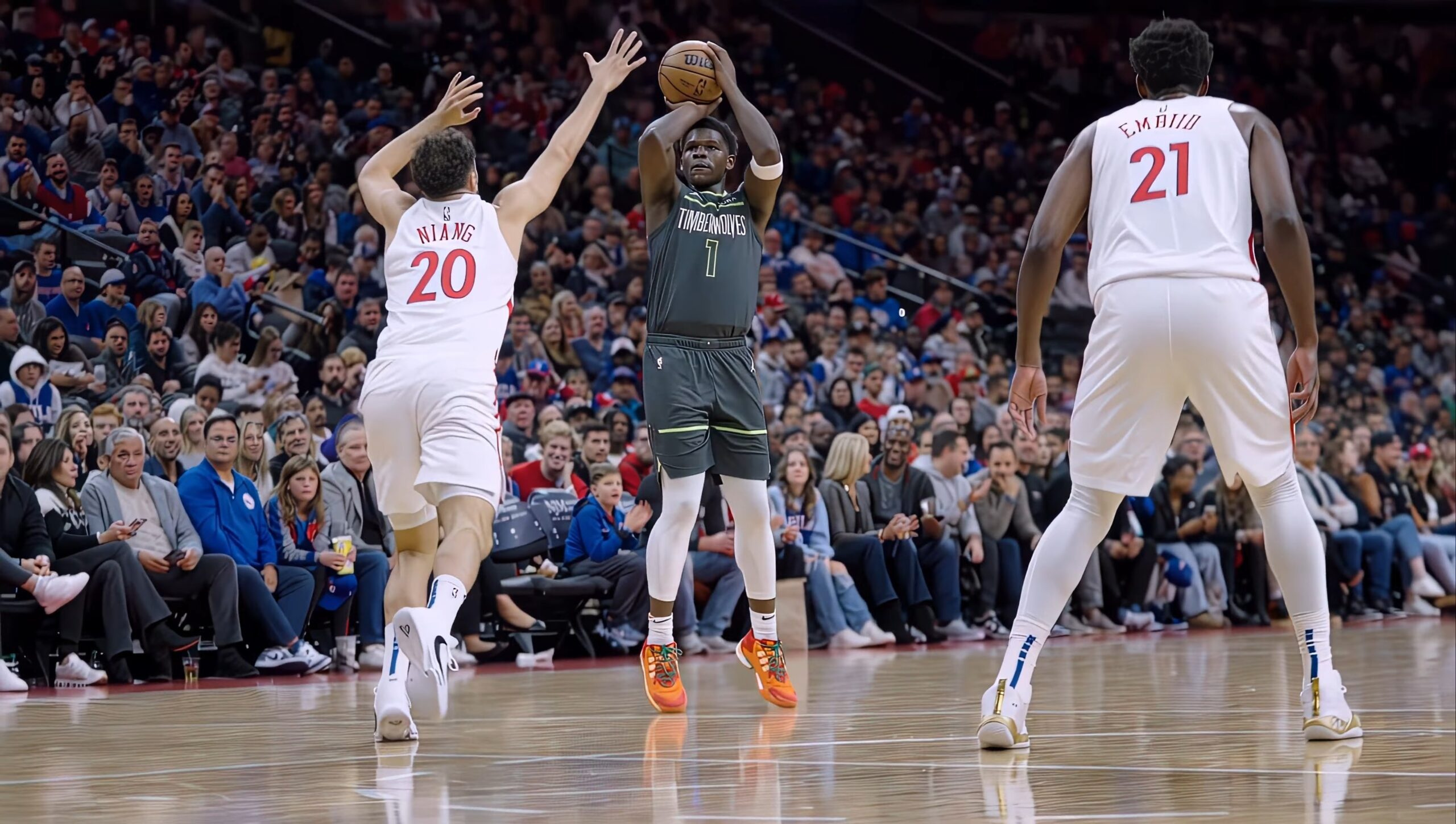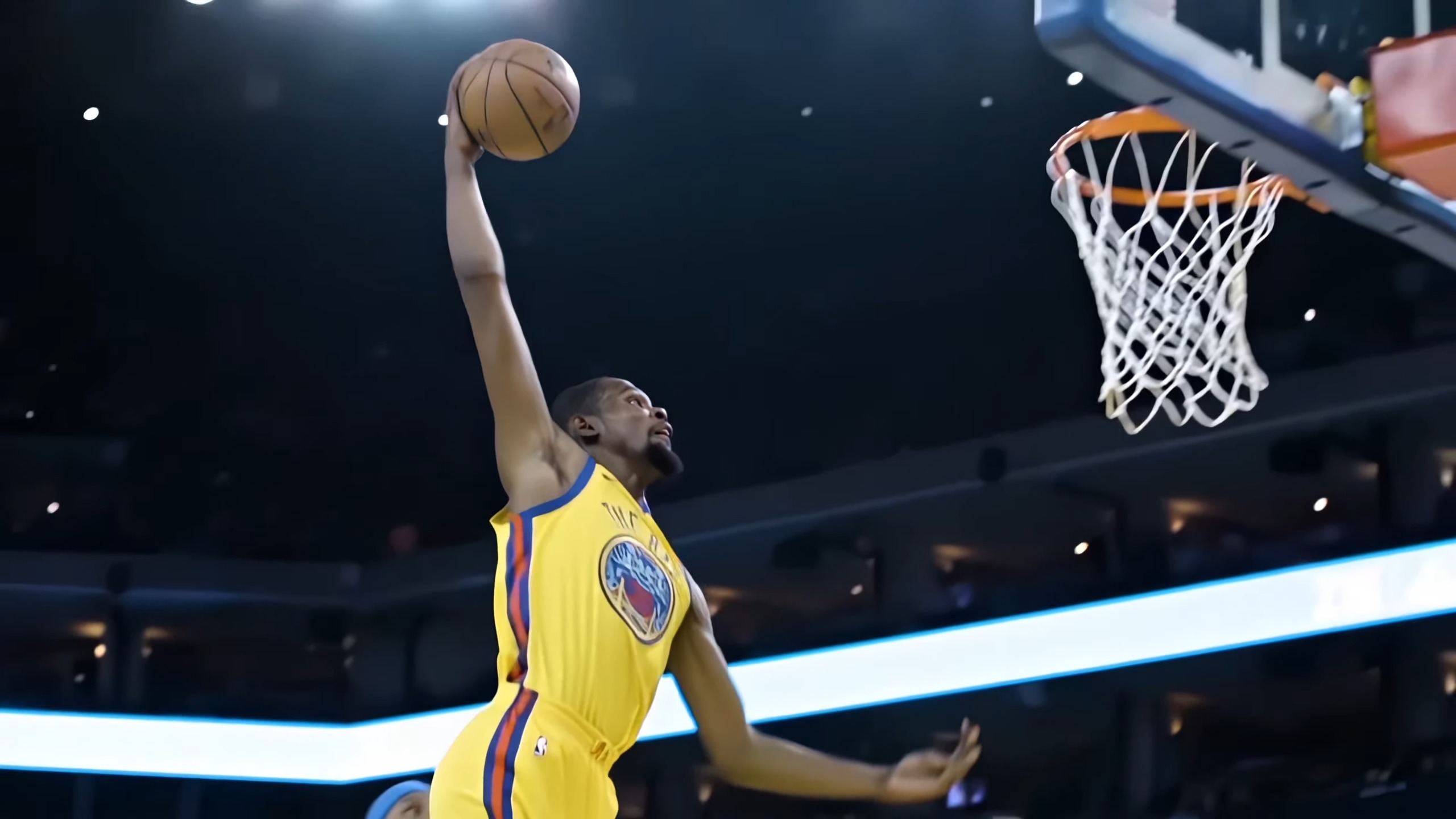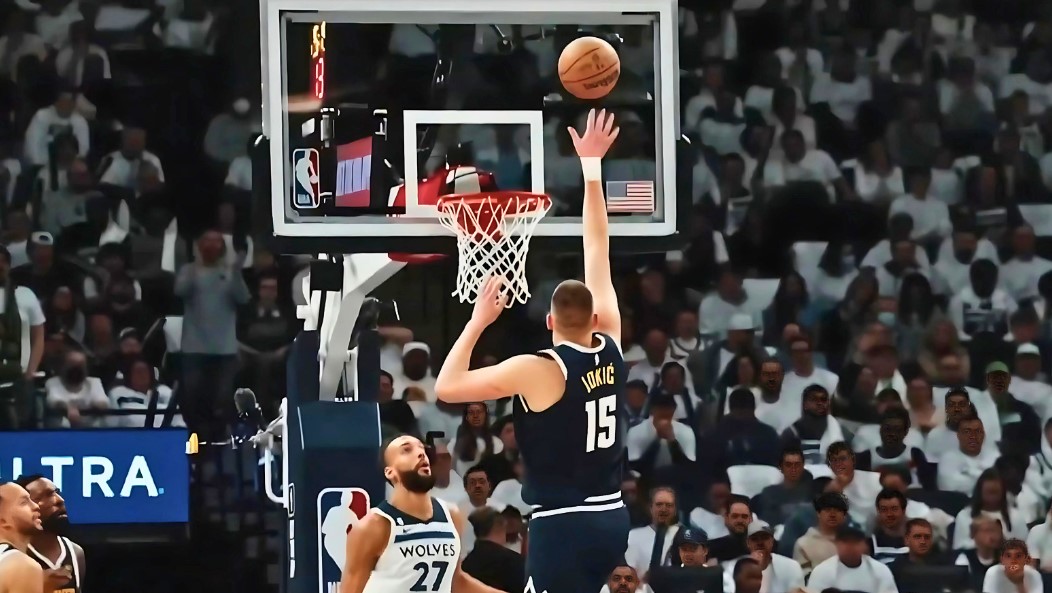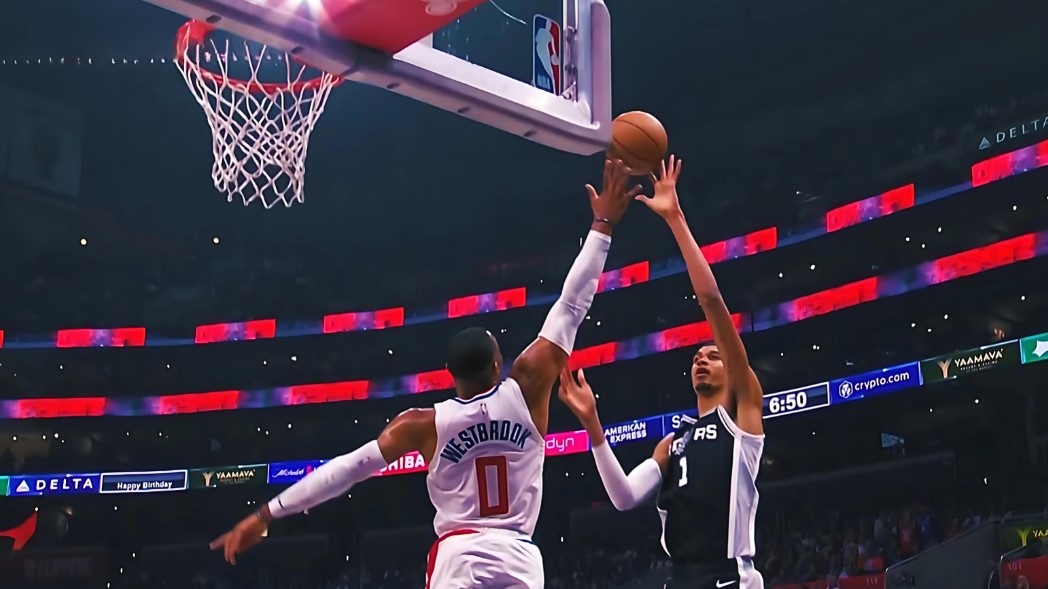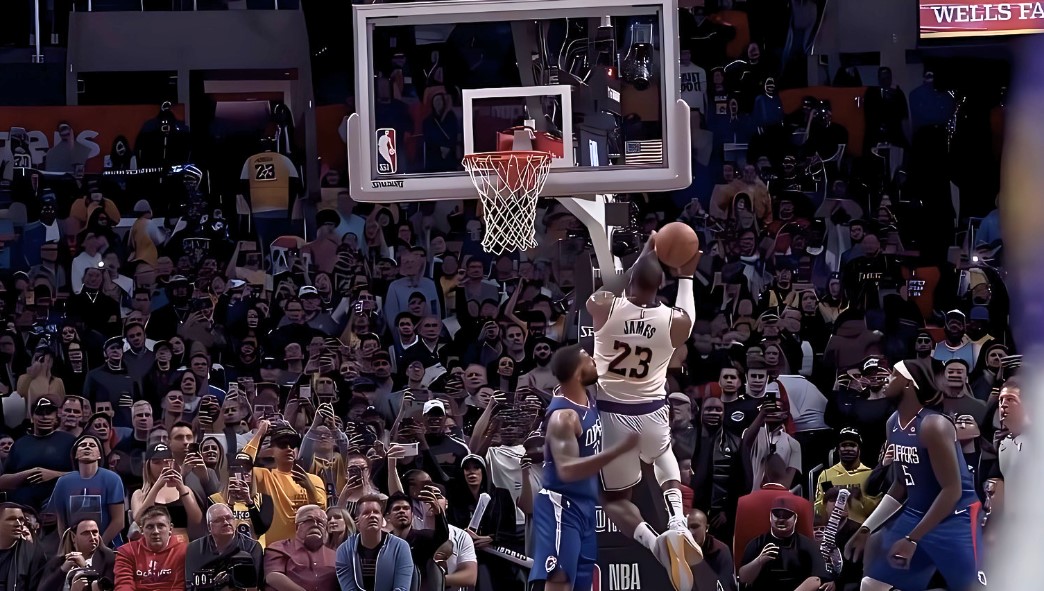Height has always been a defining characteristic in the NBA, weaving its way significantly through the fabric of basketball identity. As the sport has evolved, so too have the physical profiles of its players, particularly their height, which varies by position on the court.
The average height of an NBA player hovers around 6 feet 6 inches, a stature that’s been relatively consistent, although it has experienced some changes over time.
Key Takeaways
- Average NBA Height: NBA players average at 6’6″.
- Point Guards (PG): Now taller, averaging 6’2.4″, offering defense and scoring benefits.
- Shooting Guards (SG): Height increased from 6’3″ in the 1960s to 6’6″ today, aiding in shooting and defense.
- Small Forwards (SF): Range between 6’6″ to 6’9″, versatile in scoring and defense.
- Power Forwards (PF): Slightly smaller now, averaging 6’6.5″, focusing on agility and perimeter skills.
- Centers (C): The tallest, averaging around 7 feet, key for rebounds and blocks.
- Game Evolution: Shift towards speed and agility, with a recent decrease in average height to 6’6.3″.
Overview
The NBA has witnessed a remarkable transition in the average height of players since its inception. Initially dominated by shorter players, you can see a height increase when centers and power forwards, like George Mikan in the 1950s, entered the scene, altering the average significantly.
During the late 1980s to the early 1990s, the league featured some of the tallest players in history, pushing the average to new peaks. The average height in the 2021-2022 season was 6’6″, reflecting a notable difference from the average American male height according to Hoops Geek.
In more recent decades, you can observe a slight decrease. The average NBA height dipped to 6’6.3″ in 2021, which was the lowest over the past 41 years as it is stated by runrepeat.com. This shift can attribute to the game’s evolving style, with a greater emphasis on speed, agility, and outside shooting.
Here’s a brief breakdown by position using the latest figures:
- Point Guards (PG): Tallest they’ve been, at an average of 6’2.4″.
- Shooting Guards (SG): Comparable to PGs, usually around the 6’4″ to 6’6″ range.
- Small Forwards (SF): Versatile in height but generally hover around 6’6″ to 6’9″.
- Power Forwards (PF): Have seen a reduction in size, currently averaging close to SFs.
- Centers (C): Still the tallest on the court, with an average around 7 feet.
You can track the height evolution and how it correlates with gameplay changes over the years. The trend points towards a more positionless basketball where height remains a factor, but not the only one dictating a player’s role.
Point Guards: Average Height and Play Style Impact
Point Guards, traditionally the shortest players on the basketball court, have seen a slight increase in height over the years. In the early days of the NBA, point guards averaged about 6 feet in height. As the game has evolved, so has the typical stature of these players. By 2024, point guards have reached an average height closer to 6 feet 3 inches.
Your role as a point guard demands agility and speed, making height less crucial than in other positions. However, taller point guards like Ben Simmons who stands at six-foot-ten introduce versatility, giving your team a distinct advantage.
Height’s Role:
- Defense: Being taller can help you contest shots and disrupt passing lanes.
- Offense: A height advantage can facilitate shooting over defenders and provide better vision over the court.
Point guards with extra inches have redefined the position’s play style, blending traditional ball-handling and playmaking skills with the ability to score more effectively.
Play Style Impact:
- Scoring: Taller point guards can shoot and finish at the rim against bigger defenders.
- Passing: Improved passing lanes open up thanks to increased height, allowing for more dynamic playmaking.
As a point guard, its basketball IQ is just as vital as your physical attributes.
Observing the transformation of the point guard role over my years following basketball has been truly intriguing. Initially, these players were the quintessential playmakers, prioritizing ball distribution over scoring.
Witnessing their average height inch closer to 6 feet 3 inches has significantly broadened their impact on the game. From my perspective, this shift not only elevates a team’s capabilities on both ends of the court but also injects a strategic complexity into the gameplay.
Shooting Guards: Height Analysis Over the Decades
When you look at the NBA’s shooting guards throughout the years, you’ll notice that their height has seen slight changes over the decades. Back in the 1960s, shooting guards averaged around 6 feet 3 inches, which was considered tall for the era.
As basketball evolved, so did the physical profile of the players. By the 1980s, the average height for a shooting guard had increased to about 6 feet 5 inches.
In the 1990s and early 2000s, the trend continued modestly with greats like Michael Jordan and Kobe Bryant, who stood at 6 feet 6 inches, epitomizing the ideal shooting guard build. Being slightly taller provided an edge in shooting over defenders and versatility on defense.
The present era shows a continuation of this preference for taller shooting guards, with many players in this position standing at an average of 6 feet 6 inches.
- 1960s: ~6’3″
- 1980s: ~6’5″
- 2000s: ~6’6″
Small Forwards: Versatility Dynamics
Small forwards occupy a unique position in basketball, often considered the most versatile players on the court. They manage tasks ranging from scoring to defending, and their height can influence how effectively they fulfill their roles.
Typical Height Range:
- Minimum: 6 feet 6 inches (1.98 meters)
- Maximum: 6 feet 8 inches (2.03 meters)
Despite these averages, you’ll see considerable variation in small forward heights across the NBA, reflecting the evolving nature of the game. Some teams deploy smaller, quicker small forwards who excel in perimeter play, whereas others prefer taller players who can leverage their size inside.
Ability to perform as a small forward is not solely defined by stature according to Red Bull. The position demands a balance between physical attributes and basketball skills. Height should complement your ability to shoot from the outside, drive to the basket, and guard multiple positions. Agility, speed, and strength all play crucial roles in optimizing your on-court performance.
In my experience, the effectiveness of a small forward isn’t strictly tied to their height. I’ve seen smaller, agile forwards who thrive on the perimeter, making swift moves and taking advantage of their speed.
For instance, Kawhi Leonard, who stands at 6 feet 7 inches, exemplifies this blend of agility and precision, dominating both ends of the floor with his defensive prowess and offensive capabilities.
Conversely, the taller forwards leverage their size for interior play, showcasing how diverse the position can be. Kevin Durant, with his near 7-foot frame, uses his length to shoot over defenders and drive to the basket, illustrating the position’s versatility.
This adaptability makes the small forward spot one of the most dynamic and intriguing positions on the basketball court, with players like Leonard and Durant highlighting the vast potential roles a small forward can embody.
Power Forwards: Height and Court Presence
In the realm of professional basketball, power forwards play a pivotal role on the court. Traditionally, your expectations of a power forward’s height might range between 6 feet 8 inches to 6 feet 10 inches, affording them the physicality required to compete close to the basket.
Consider these typical responsibilities:
- Rebounding: Your ability to secure rebounds is enhanced by your height and strength.
- Scoring: You possess the skills to score from inside, and increasingly, from the perimeter.
- Defense: Height complements your defensive range, allowing you to guard multiple positions.
| Year | Average Height |
|---|---|
| 2023-2024 | 6 feet 6.5 inches |
| 2021-2022 | 6 feet 6 inches |
Power forwards have not been exempt from the general trend where players are growing taller. This data showcases a subtle, yet noticeable, increase in height over recent seasons.
A prime example of this evolution is Draymond Green of the Golden State Warriors. Standing at 6 feet 6 inches, Green defies traditional height expectations for a power forward. Yet, his impact on the court is profound, embodying the modern power forward’s versatility.
He’s a formidable defender across multiple positions, a relentless rebounder, and an effective scorer from both inside and beyond the arc.
Green’s ability to adapt and excel in a role that blends traditional power-forward responsibilities with the agility and skillset of a smaller player highlights the changing dynamics of basketball positions.
Centers: The Giants of the Court
In the realm of NBA basketball, the center position is often manned by some of the tallest athletes in the sport. As a pivotal part of a team’s defense and offense, your typical center stands significantly taller than players in other positions.
Average Height Range
- Minimum: 6 feet 10 inches
- Maximum: 7 feet 1 inches
Players in this position may hover around the average height of just over 6 feet 11 inches, yet some individuals may surpass this figure considerably, with a select few centers reaching or exceeding heights of 7 feet 3 inches.
Tall Centers
- Notables Over 7 Feet: Only a minority of centers cross the 7 feet 2 inches mark.
- Role: These individuals leverage their height to dominate in rebounds and shot-blocking.
You’ll find these towering giants play a crucial role in their teams’ performance, often becoming the linchpin in both offensive and defensive plays. With this stature comes a greater wingspan and reach, enabling them to secure balls that are typically beyond the grasp of shorter players.
From my perspective, the sheer size of these players is more than just a physical attribute; it’s a strategic advantage.
Centers like Shaquille O’Neal and Yao Ming, who stood at 7 feet 1 inch and 7 feet 7 inches respectively, have demonstrated how height can be leveraged to dominate the game.
Their ability to rebound, block shots, and intimidate opponents in the paint has been unparalleled.
Watching them play, it was evident how their height and wingspan allowed them to reach balls and alter shots that would be out of reach for others, fundamentally changing the dynamics of the game.
Tallest Individual in Professional Basketball
- Height: 7 feet 7 inches
- Player: Yao Ming
- Team: Houston Rockets
- Origin: China
- Basketball Start: Aged 9
- NBA Draft: 2002
- Retirement Year: 2011
Global Trends: International Players and Height Averages
When you look at the NBA landscape over the years, you’ll notice a fascinating integration of international players who have influenced the overall height dynamics of the league. International big-men have become significant assets for NBA teams, especially since 53% of the NBA’s 7-footers are international players.
Consider the height and weight evolution over time: the average height in the NBA as of 2021 was recorded as 6 feet 6.3 inches, which is notable for being the lowest average over the past four decades. This suggests a shift in player profiles and skills that transcend pure height advantage.
Here’s a quick breakdown by position, focusing on the 2023-2024 season:
| Position | Average Height |
|---|---|
| Center | 6 feet 10 inches |
| Forward | 6 feet 8 inches |
| Guard | 6 feet 4.3 inches |
For the 2023-2024 season, take teams like the Dallas Mavericks as an example, where heights range significantly, highlighting how the NBA accommodates diverse player physiques.
You can observe a consistent presence of height across different positions, which has become a defining factor for the draft and recruitment strategies. With players like Dereck Lively II standing at 7 feet 1 inch and guards like Seth Curry at 6 feet 1 inch, the spectrum is broad, but there remains a distinct average height that epitomizes an NBA player per position.
Impact of Height on Player Performance and Career Longevity
For someone like me, observing centers who typically stand around 7 feet tall, it’s clear their height provides a distinct advantage in rebounding and shot-blocking. Meanwhile, guards and forwards, ranging from 6’3″ to 6’9″, demonstrate how a mix of height and agility can be crucial for shooting over defenders and driving to the hoop.
Yet, from what I’ve learned, being taller doesn’t guarantee a longer career in the NBA. Research on former professional basketball players indicates that taller individuals don’t always enjoy extended careers within the league, possibly due to the greater stress placed on their bones and joints, which can lead to injuries.
From my perspective, considering the positions:
- As a Center (~7 feet tall), the physical strain might shorten career longevity.
- Forwards (6’7″ to 6’9″) experience varied impacts on their careers, heavily influenced by their playstyle.
- Guards (6’3″ to 6’6″) could potentially enjoy longer careers with fewer injuries, thanks to their lower center of gravity and agility.
This insight has led me to appreciate the nuanced ways in which height and physical demands affect NBA players. Guards, with their agility, seem to navigate a path that might allow them a longer tenure in the league.
In contrast, the rigorous physical demands on centers and forwards, especially during high-impact plays under the basket, could indeed curtail their playing years. This understanding has deepened my appreciation for the complexity and physicality of professional basketball.
Frequently Asked Questions
Conclusion
The NBA’s evolution showcases a fascinating journey of height dynamics, reflecting changes in gameplay and player roles. From towering centers to agile guards, the league’s diversity in physical profiles underscores a broader strategy shift towards versatility and skill, making basketball a constantly evolving sport.

